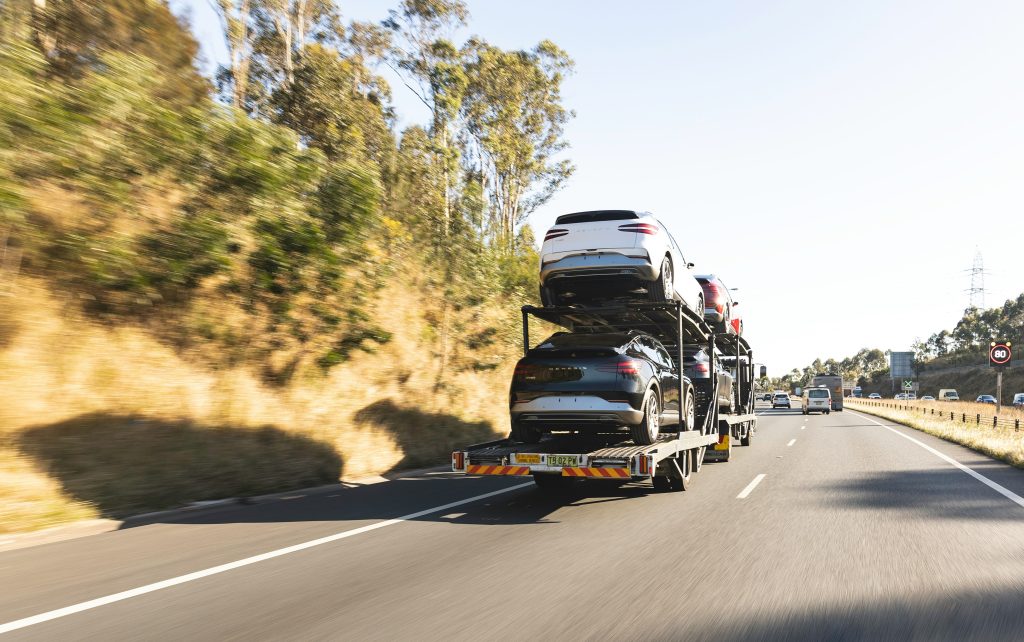Over 27 million Americans relocate to other states annually. (U.S. Census Bureau). These moves can be a part of seasonal or family relocations, job switches, education, or career-related reasons. Many of those moves involve getting a car along. Some other reasons for car hauling to another state include dealership transfers, manufacturer supply, online selling and purchasing, and auctions. The question is how car shipping to another state works in 2025.
For newbies, it can seem daunting, but an informed decision backed by thorough research makes it simple and stress-free. In this context, choosing a reliable auto transporter to ship a car across the country is imperative to save you from the hassle that comes with relocating a vehicle yourself over long distances. This guide walks you step-by-step through the process of professional car shipping to another state, including service options and related costs, as well as steps to ensure your car’s safety during the trip.
-
Hiring a Reputable Car Transporter
An experienced shipping partner who is licensed, bonded, insured, and has proven expertise can make everything drastically easier. Since not all auto transport companies offer the same reliability or transparency, you should conduct proper research to find the best service provider for your job. Request quotes from at least three companies at a time, compare and contrast their longevity, customer satisfaction, safety records, insurance policies, and pricing.
-
Evaluate Your Transport Options
Understanding your available options is the first step, given your vehicle’s requirements and budget. When choosing transport, you’ll typically pick between:
- Open Transport: The most common and affordable option for standard vehicles. Vehicles are shipped on open-air trailers. They are exposed to external elements like dust, debris, and weather conditions. You don’t need to worry about anything, as a vehicle transport company takes care of everything and provides comprehensive insurance for enhanced protection.
- Enclosed Transport: In this method, your vehicle is placed in a fully enclosed carrier, like a container. It offers added protection from external environmental factors. It is a slightly more expensive service than open transport and is recommended for luxury, classic, or high-value vehicles that require premium protection and are worth the added cost.
-
Understanding the cost factor
Interstate car shipping can cost from a few hundred to a few thousand dollars, depending on several overlapping factors. Such as, a car haul from New York City, NY, to Houston, TX, could cost between $700 and $1,200, depending on these variables:
- Distance — Overall, the aggregate cost increases with longer distance.
- Vehicle Specs — Vehicle size, weight, and modifications impact the prices.
- Carrier Type — Open and enclosed carrier shipping affects the cost.
- Specialized Shipping — Swift delivery or door-to-door pickup and drop-off.
- Additional Factors — Fuel costs, seasonal trends, and additional insurance.
-
Preparing your vehicle for pick up
Preparing a car when shipping is a crucial step for safety, compliance, and a smooth shipping process. Here is the checklist to follow:
- Clean the vehicle: It makes the inspection easier, providing a clearer view to spot surface damage.
- Remove Personal Items: Personal items are not insured and can be lost or damaged. You must take them off.
- Secure Loose Items: Remove or secure custom accessories to prevent movement and shifting during transport.
- Check the Fuel Level: Drain the fuel tank to a quarter-full as a safety measure to prevent fire hazards, leakage, or staining.
- Basic Maintenance: Inflate tires, charge the battery, and repair any leaks you may find in the engine or fuel system.
- Inspect and Document: Inspect and take clear photos or a time-stamped video to capture any existing damage clearly.
- Disable Alarms and GPS: Remove or turn off alarm systems, toll tags, parking passes, and GPS devices to prevent theft or activation fees.
-
Select the Convenient Delivery Service
When choosing the type of shipping you need, consider your requirements, assess your budget, and evaluate the maximum you can secure out of your chosen service. You can pick up between:
- Terminal-to-Terminal: If you live near a company’s storage or dispatch facility, this option is suitable for saving on costs. What if your vehicle is inoperable? You will need to hire another transport service to deliver it to your home.
- Door-to-Door: It’s a white-glove service for your vehicle that provides maximum convenience. Your car will be picked up and dropped off directly at your doorstep.
-
Things to Do After Delivery
Once you receive your car, you are expected to take a few steps before signing the delivery receipt:
- Take a final look at your car’s condition after transport.
- Compare it to the previously recorded pictures/videos.
- Check the vital signs — lights, brakes, and tires.
- Verify the engine’s operability and check the mileage on the meter.
- Double-check everything before signing the BOL.
- If you find any damage, contact your service provider immediately.
Final Thoughts
Relocating a car from one state to another is not difficult when you follow the proper steps and choose the right shipping partner. For a seamless journey, it is essential that you know your transport options and their suitability for your needs, such as open and enclosed transport. Finding a licensed and insured carrier with proven expertise in safe hauling, combined with proper vehicle preparation, ensures your car reaches its destination in perfect condition and at the exact time. Planning ahead and making an informed choice are the keys to a remarkable trip for your vehicle.
